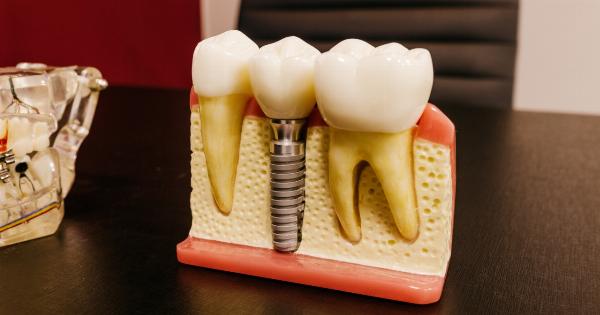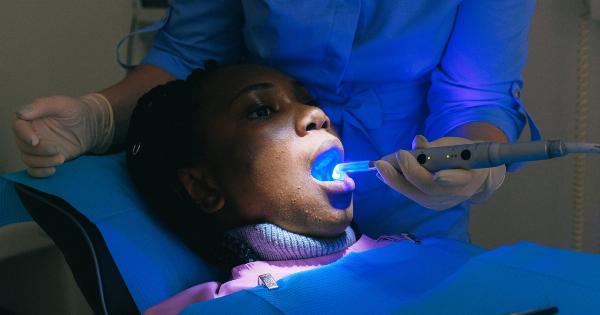Sialolithiasis, also known as salivary stone disease, is a condition characterized by the formation of crystals or stones within the ducts of the salivary glands.
It primarily affects the major salivary glands, such as the parotid gland located in front of the ears, and the submandibular glands located under the jaw. These stones can cause pain, inflammation, and complications if left untreated. In this article, we will explore the symptoms of sialolithiasis in your mouth, helping you identify and seek appropriate treatment for this condition.
1. Uncomfortable Swelling in the Affected Gland
One of the initial symptoms of sialolithiasis is the presence of swelling or enlargement in the affected salivary gland.
If you notice an unusual lump or swelling around your jawline, specifically in the region of the parotid or submandibular gland, it may indicate the presence of a salivary stone.
2. Pain or Discomfort in the Affected Area
The presence of salivary stones can often lead to pain or discomfort in the affected area.
This pain can range from mild to severe, and may increase when eating or drinking, as the stimulation of salivary flow exacerbates the obstruction caused by the stone. The pain is typically localized to the affected gland and may also be accompanied by tenderness or sensitivity in the surrounding tissues.
3. Dry Mouth and Difficulty in Swallowing
Sialolithiasis can obstruct the flow of saliva from the affected gland into the mouth, leading to a dry mouth sensation.
Reduced saliva production not only affects the overall moisture of the mouth but can also impact the ability to swallow food and liquids comfortably. If you experience persistent dryness and difficulty in swallowing, it is essential to consider the possibility of a salivary stone.
4. Foul Taste or Odor in the Mouth
Salivary stones can disrupt the normal flow of saliva, resulting in stagnation and accumulation of saliva in the ducts. This accumulation can cause a foul taste or odor in the mouth, which may persist even after rigorous oral hygiene practices.
If you encounter persistent bad breath or an unpleasant taste in your mouth, it could be a sign of sialolithiasis.
5. Recurrent Episodes of Pain and Swelling
Sialolithiasis is often characterized by recurrent episodes of pain and swelling. The pain may initially start as occasional mild discomfort but can progress to severe episodes that last for several hours.
These episodic symptoms are typically triggered by activities that stimulate salivary flow, such as eating or thinking about food.
6. Difficulty Opening Your Mouth Wide
As salivary stones grow in size, they can cause blockages or partial obstructions in the salivary ducts.
This can lead to difficulties in opening your mouth wide, as the obstruction restricts the normal flow of saliva and interferes with the movement of the jaw. If you notice limitations in your ability to open your mouth, it may indicate the presence of salivary stones.
7. Visible Stones or Lump
In some cases, the presence of a salivary stone may be visible or palpable from the outside. You may notice a small, hard lump or feel a tender area around the affected salivary gland.
If you see or feel something unusual in the region of the major salivary glands, it is crucial to get it examined by a healthcare professional to confirm the presence of sialolithiasis.
8. Infection and Abscess Formation
If a salivary stone causes a complete blockage of the salivary duct, it can lead to the development of an infection in the affected gland. This can cause increased pain, swelling, and redness in the area.
In severe cases, an abscess may form, which requires immediate medical attention. Signs of infection include fever, chills, and a purulent discharge from the duct opening.
9. Radiating Pain to the Ear or Neck
Salivary stones can sometimes cause radiating pain that extends to the ear or neck. If you experience pain that seems to radiate from the parotid or submandibular gland to these areas, it could indicate the presence of sialolithiasis.
This pain may feel sharp or dull and can be worsened by movement or pressure on the affected gland.
10. Recurring Salivary Gland Inflammation
Individuals with sialolithiasis often experience recurrent episodes of salivary gland inflammation.
The presence of salivary stones can disrupt the normal functioning of the gland, leading to recurrent episodes of gland swelling, tenderness, and discomfort. If you have a history of recurring salivary gland inflammation, it is essential to investigate the possibility of underlying sialolithiasis.
























